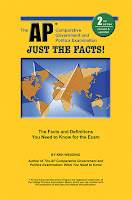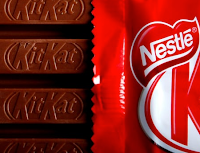Overwhelmed by chocolate
Back in 2010, The Independent published an article that considered a claim by Nick Clegg that it took 15 years for the EU to define chocolate.
Now the court arguments are about the shape of chocolate bars.
Claim: "The European Union ... is a club that took 15 years to define chocolate in a chocolate directive." (Nick Clegg)
Fact: An EU directive introduced in 1973 defined what could be in products labelled "chocolate". However, the definition didn't include the chocolate produced by British manufacturers until 27 years later. The delay was due to the amount of cocoa butter and milk in chocolate in different countries. Britain and Ireland produce chocolate with higher milk content than on the continent, and use other vegetable fats as substitutes for cocoa butter. There was a failed attempt to include these products in the definition in 1984, but it wasn't until 2000 that other European nations accepted that this could be also be called chocolate.
It is commercial legal cases like this (What, legally, is champagne?) that gives EU laws and regulations a bad reputation — at least until anyone tries to legally define things. Until then your "four-fingered" Kit Kat bars are liable for counterfeiting.
Choc horror: four-fingered KitKat set to lose protected EU status
Teaching Comparative blog entries are indexed. Use the search box to look for country names or concept labels attached to each entry.
 Just The Facts! 2nd edition is a concise guide to concepts, terminology, and examples that will appear on May's exam.
Just The Facts! 2nd edition is a concise guide to concepts, terminology, and examples that will appear on May's exam.
Just The Facts! is available. Order HERE.
Amazon's customers gave this book a 5-star rating.
Now the court arguments are about the shape of chocolate bars.
Claim: "The European Union ... is a club that took 15 years to define chocolate in a chocolate directive." (Nick Clegg)
Fact: An EU directive introduced in 1973 defined what could be in products labelled "chocolate". However, the definition didn't include the chocolate produced by British manufacturers until 27 years later. The delay was due to the amount of cocoa butter and milk in chocolate in different countries. Britain and Ireland produce chocolate with higher milk content than on the continent, and use other vegetable fats as substitutes for cocoa butter. There was a failed attempt to include these products in the definition in 1984, but it wasn't until 2000 that other European nations accepted that this could be also be called chocolate.
It is commercial legal cases like this (What, legally, is champagne?) that gives EU laws and regulations a bad reputation — at least until anyone tries to legally define things. Until then your "four-fingered" Kit Kat bars are liable for counterfeiting.
Choc horror: four-fingered KitKat set to lose protected EU status
The shape of the four-finger KitKat bar is set to lose its EU-wide protected trademark status after the European court of justice was instructed that the chocolate was not well enough known in Belgium, Ireland, Greece and Portugal.
An appeal by Nestlé, the maker of KitKat, against an earlier ruling should now be thrown out, the court’s advocate general advised judges sitting in the Luxembourg court.
The company had only provided evidence that the chocolate was sufficiently well known in Denmark, Germany, Spain, France, Italy, the Netherlands, Austria, Finland, Sweden and the UK, the advocate general, Melchior Wathelet, said.
For the trademark to be valid the KitKat would need to be recognised as distinctive across all the EU’s states, as had been ruled by the general court, the second highest in the EU, in 2016.
The decision by the advocate general, whose advice is not binding but is generally followed, means the KitKat shape will now be open to imitation by competitors…
The legal skirmish in the European court of justice is part of a wider battle between Nestlé and Mondelēz International, previously known as Cadbury Schweppes, which filed the original challenge to the EU trademark in 2007, a year after it had been granted. Nestlé, in turn, is challenging Mondelēz’s British trademark for the shade of purple wrapper on its Cadbury’s Daily Milk chocolate bars…
Gaining trademark status for shapes has proven to be particularly challenging for companies. In 2016 the Rubik’s Cube lost a decade-long battle to secure trademark protection for its own distinctive character…
Teaching Comparative blog entries are indexed. Use the search box to look for country names or concept labels attached to each entry.
 Just The Facts! 2nd edition is a concise guide to concepts, terminology, and examples that will appear on May's exam.
Just The Facts! 2nd edition is a concise guide to concepts, terminology, and examples that will appear on May's exam.Just The Facts! is available. Order HERE.
Amazon's customers gave this book a 5-star rating.



Comments
Post a Comment